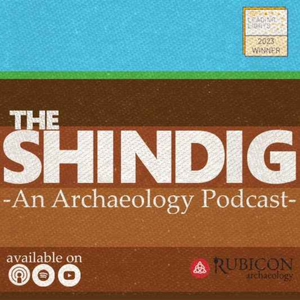
The Shindig - An Archaeology Podcast
Rubicon Archaeology
Here’s an expanded version of the summary for The Shindig podcast:
The Shindig is an award-winning podcast that brings archaeology, history, and heritage to life through engaging conversations and expert insights. Produced by Rubicon Archaeology, the show delves into the latest archaeological discoveries, historical research, and heritage debates.
Each episode, we sit down with leading archaeologists, historians, authors, and industry professionals to uncover fascinating stories from the past and explore how archaeology shapes our understanding of history today. From ancient sites to groundbreaking research, we dig deep into the world of archaeology—sometimes literally!
Whether you’re a seasoned archaeologist, a history enthusiast, or just curious about the past, The Shindig offers an entertaining and informative listen for anyone interested in the mysteries beneath our feet
.
🎧 Tune in and join the dig!
#TheShindigPodcast #Archaeology #History #Heritage #Podcast #RubiconArchaeology
Hosted on Acast. See acast.com/privacy for more information.


2 Listeners
All episodes
Best episodes
Seasons
Top 10 The Shindig - An Archaeology Podcast Episodes
Goodpods has curated a list of the 10 best The Shindig - An Archaeology Podcast episodes, ranked by the number of listens and likes each episode have garnered from our listeners. If you are listening to The Shindig - An Archaeology Podcast for the first time, there's no better place to start than with one of these standout episodes. If you are a fan of the show, vote for your favorite The Shindig - An Archaeology Podcast episode by adding your comments to the episode page.
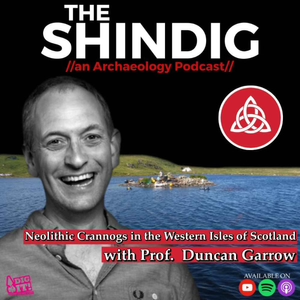
Neolithic Crannogs in the Western Isles of Scotland – A Dig It! Special with Prof. Duncan Garrow
The Shindig - An Archaeology Podcast
10/02/23 • 26 min
An almost incredible discovery has been made in Scotland’s stunning Western Isles: human-made islets in lochs, known in Scotland and Ireland as crannogs, were being constructed by Neolithic communities. Previously, these remarkable sites, phenomena both of waterside habitation and ritual activity, had been thought to be a development of the Late Bronze Age or early Iron Age, but new archaeological research is showing far earlier origins, in a revelation with major ramifications for how we view not only the Scottish but also the European Neolithic periods.
Join us for this Dig It! special as we chat with Professor Duncan Garrow of the Islands of Stone project and the University of Reading to hear about the amazing survivals of Neolithic pottery and organic artefacts that are changing the way we look at these wonderful feats of house engineering and ritual practice.
Islands of Stone: https://crannogs.soton.ac.uk/
A note from our wonderful Dig It! partners:
Dig It! is coordinated by the Society of Antiquaries of Scotland and primarily funded by Historic Environment Scotland.
Dig It! is a hub for Scottish archaeology coordinated by the Society of Antiquaries of Scotland. Our mission is to increase understanding of and engagement with archaeology for Scotland-based audiences by providing promotion and support to the heritage sector and enabling other sectors and excluded communities to connect with archaeology. One example of this is our annual Scotland Digs summer fieldwork campaigns and for 2023, we’re excited to be working with the Red River Archaeology Group to produce special episodes of The Shindig podcast to showcase a few of the fantastic archaeological projects taking place across the country.
Dig It! website: https://www.digitscotland.com/
Dig It! Digest: https://www.digitscotland.com/contact-us/newsletter/
Hosted on Acast. See acast.com/privacy for more information.

1 Listener
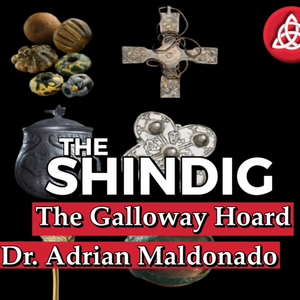
The Viking-Age Galloway Hoard - with Dr. Adrián Maldonado
The Shindig - An Archaeology Podcast
06/18/23 • 69 min
The Galloway Hoard is one of the most spectacular Viking-Age hoards ever discovered, its multiple packages and layers containing not only a huge volume of remarkable silver and gold jewellery and a stunning lidded silver vessel, but also an astonishingly rare collection of the organic materials - in this case, silk, leather, wool, animal gut, wood, and some very special dirt - that almost never survive from the early medieval world.
In this episode, join National Museum of Scotland Galloway Hoard Researcher Dr. Adrián Maldonado as he interweaves the archaeology and history of a magnificent treasure trove deposited in c. AD 900 by unknown hands in a turbulent and vivid area of south-west Scotland.
The Galloway region in which the hoard was deposited was a blurry mix of cultures and languages, ranging from Scandinavian and Anglo-Saxon to Irish, Scottish and British. Reflecting this multicultural environment, the hoard's contents, which seem to come from as far apart as Central Asia and Ireland, raise more fascinating questions than they answer about who was living, fighting and dying in this most dramatic and mutable part of the Viking world. As we learn, the project to unwrap the Galloway Hoard is only just beginning, with multiple agencies and experts called to Scotland to delve deeper and deeper into both the hoard and its secrets!
Who, then, buried this most eclectic and remarkable of hoards? It was once presumed that it was a band of Vikings, but the answer, as Adrián tells presenter Dr. Tom Horne and Producer Luke Barry, may very well surprise you...
#viking #vikings #archaeology #history #britain #ireland #scandinavia #vikingage
Hosted on Acast. See acast.com/privacy for more information.

1 Listener
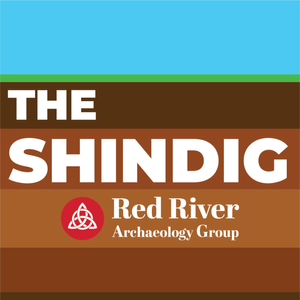
M28 Cork to Ringaskiddy Project
The Shindig - An Archaeology Podcast
05/28/23 • 41 min
Rubicon Heritage's Trish Long, Transport Infrastructure Ireland's Ken Hanley and Cork County Council's Ed Lyne chat about the M28 Cork to Ringaskiddy Project that's revealing so much about millennia of local archaeology and heritage!
The M28 Cork to Ringaskiddy Project is being progressed by Cork County Council on behalf of Transport Infrastructure Ireland.
Hosted on Acast. See acast.com/privacy for more information.
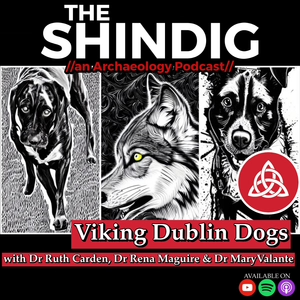
Viking Dublin Dogs
The Shindig - An Archaeology Podcast
08/13/23 • 82 min
If you are fascinated by the Viking Age and love dogs, wolves or horses, then this is the archaeology and history podcast for you! In this episode, Dr. Tom Horne chats with Drs. Ruth Carden, Mary Valante and Rena Maguire of the Viking Dublin Dogs research team about their fascinating work on understanding the characteristics of dogs, wolves and horses, and what made them so important to the peoples of early medieval Europe. What's more, you can help them raise money for more vital radiocarbon dating of bones that will help give us enormous insight into these hugely important animals, their trade and breeding, and the vast range of vital human-animal interactions that were central to the daily lives of people in early medieval Ireland, Britain and Scandinavia. Find our about the Crowdfunder Campaign on the Viking Dublin Dogs website! https://www.vikingdublindogs.ie/category/all-products
Producer, Editor and Co-host: Luke Barry
Find out more about the project from the Viking Dublin Dogs social media channels https://www.twitter.com/VikingDublinDog | https://www.facebook.com/VikingDublinDogs
And discover even more from their brilliant website (https://www.vikingdublindogs.ie/), from which we learn the following:
This pioneering project will run from 2022 to 2028, studying bones from across several sites in Ireland and Britain. The Researcher Pack will investigate the origins, diet, sizes and gender of dogs and wolves, their roles, and the roles of horses in human societies in Viking-Age and Medieval times.
Not much is known about dogs from Viking-Age and Medieval periods, apart from their body sizes: small, medium and large types. There were no dog breeds as we know them today.
- Perhaps some were 'pet' wolves or dogs interbred with wolves?
- Were some dogs associated with status of their owner?
- Were there special working or functional relationships between horses and dogs?
- Did different dog types have different roles in Medieval societies?
- Did Vikings bring their own dogs with them from their far-reaching travels?
Hosted on Acast. See acast.com/privacy for more information.
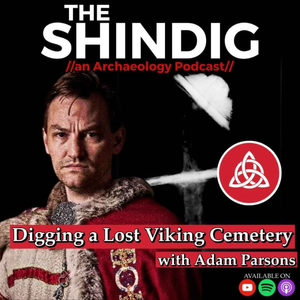
Digging a Lost Viking Cemetery – with Adam Parsons
The Shindig - An Archaeology Podcast
09/11/23 • 77 min
A Viking Cemetery in northern England: Adam Parsons of Oxford Archaeology tells us about the spectacular Cumwhitton Viking cemetery in Cumbria, subject of the brilliant ‘Shadows in the Sand: Excavation of a Viking-age Cemetery at Cumwhitton’, which Adam co-authored.
Initially discovered by metal detectorists Peter Adams and George when they found two Viking-style oval brooches, Oxford Archaeology excavated what turned out to be one of the most spectacular and important Viking cemeteries ever found in Britain. The seven furnished graves contained a truly remarkable selection of grave goods, including the remains of a wooden box containing shears, needles and a glass slickstone for smoothing fabric, with other graves containing items like amber beads, pins, silver rings, swords, axes, spears, spurs/buckles, and rare evidence for rugs and textiles. While few bones remained in the sandy soil, the burial items at Cumwhitton tell us of a society rich both in material culture but also in the cross-cultural contacts and borrowings that made Viking-Age Cumbria such a remarkable place.
From Cumwhitton, we move across Cumbria to Workington and the discovery of a huge early medieval cemetery under the burnt-out remains of St. Michael’s church. Excavated by Carlisle Archaeology, Adam and his colleagues completed the post-excavation work and wrote up the report on the amazing early medieval carved stones, inclusive of fragments of a newly-discovered ‘hogback’ stone, and multiple cemeteries, which include a mid-to-late 9th century grave with strong parallels to the Viking burials at Cumwhitton, underneath St. Michael’s.
With a focus on the northern Britons, we end with a fascinating discussion on the new multicultural world that was carved out in Cumbria and its surrounding regions in the Viking Age.
Adam Parsons is a brilliant archaeological illustrator, writer and editor with Oxford Archaeology who has worked in archaeology for over 20 years. What's more, he has devoted his spare time to being brilliant at early medieval public outreach, making exact reproductions of historical artefacts for museums, universities, and individuals and being part of Cumbraland, a living history group dedicated to portraying the 9th-11th century Brittonic Kingdom of Strathclyde. Adam is no stranger to online outreach, having large followings across his Blueaxe Reproductions social media channels on Facebook, Twitter, YouTube, and more!
Prof. Fiona Edmonds
Gaelic Influence in the Northumbrian Kingdom: The Golden Age and the Viking Age
Edmonds, F. 15/12/2019 Woodbridge : Boydell & Brewer. 322 p. ISBN: 9781783273362. Electronic ISBN: 9781787445864.
The expansion of the Kingdom of Strathclyde
Edmonds, F. 1/02/2015 In: Early Medieval Europe. 23, 1, p. 43-88. 46 p.
Prof. Stephen Driscoll
Driscoll, S.T. (2014) The Govan Stones. History Scotland, 14(1), pp. 36-37.
Dalglish, C., Driscoll, S.T. , Maver, I., Shead, N.F. and Shearer, I. (2009) Historic Govan: Archaeology and Development. Series: The Scottish burgh survey. Historic Scotland: Edinburgh, UK. ISBN 9781902771625
Driscoll, S.T. (1998) Church archaeology in Glasgow and the kingdom of Strathclyde. Innes Review, 49(2), pp. 95-114.
Cynthia Thickpenny
Thickpenny, Cynthia Rose (2019) Making key pattern in Insular art: AD 600-1100. PhD thesis, University of Glasgow. https://theses.gla.ac.uk/41009/
Hosted on Acast. See acast.com/privacy for more information.
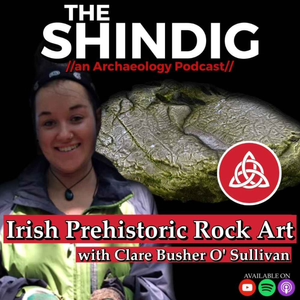
Irish Prehistoric Rock Art - with Clare Busher O'Sullivan
The Shindig - An Archaeology Podcast
10/15/23 • 53 min
Hosted on Acast. See acast.com/privacy for more information.
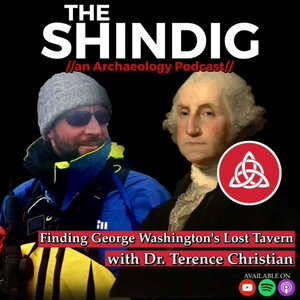
The 'First World War' and a Lost Tavern in George Washington's America - with Dr. Terence Christian
The Shindig - An Archaeology Podcast
05/22/23 • 46 min
The story of a hidden Seven Years' War ('French and Indian War') time-capsule building in Pennsylvania and what it tells us about this vicious 18th-century North American conflict and the exact whereabouts of a young George Washington and his commander, General John Forbes. Join Dr. Terence Christian as he describes the war, George Washington's key role and the discovery of a lost building that Washington may have frequented during the Forbes Campaign.
01:54 - The Seven Years War: was it effectively the first world war? What happened in North America?
03:20 - French and British conflict over the strategic Ohio River Valley
05:05 - How a young British colonial militia officer, THE George Washington, started the conflict
07:45 - George Washington the battles of Jumonville Glen and Fort Necessity
08:14 - Jumonville & Fort Necessity - How Washington 'didn't really mean to start a world war'
10:19 - Washington and the Braddock Campaign and 'the start of a world war'
11:20 - Dr. Terence Christian's commercial archaeology project of a 1750s mystery building survival
12:45 - Washington the Surveyor and Braddock's Road to the French frontier
14:43 - 'A confluence of stupidity' Britain and the disastrous Battle of Fort Duquesne
17:03 - Return to Fort Duquesne - The Forbes Expedition, 1758
17:30 - Terence's Site: a building connected to Braddock's Road and Forbes of the Forbes Campaign
18:30 - 'When [the building owners] pulled the walls down, they realized they had something far older'
19:08 - The Project: a mysterious 3-sided log-built structure buried within later walls
19:22 - Was this General Forbes' lost guns and gunpowder store from the lost Fort Bedford?
19:58 - The commercial archaeology project begins - desk-based map regressions and site visits
37:23 - Found! The last remnant of the Rising Sun tavern, central to Forbes' officers like Washington
38:50 - Huge importance of this last structure relating to Forbes, Fort Bedford & the 'First World War'
Hosted on Acast. See acast.com/privacy for more information.

A Slave-Built US Civil War POW camp (Part 1) - with Dr. Ryan K. McNutt
The Shindig - An Archaeology Podcast
03/26/23 • 36 min
Hosted on Acast. See acast.com/privacy for more information.
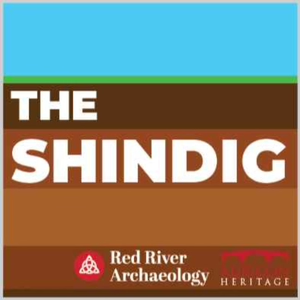
Luas Cross City with Emer Dennehy and Teresa Bolger
The Shindig - An Archaeology Podcast
11/17/21 • 54 min
Hosted on Acast. See acast.com/privacy for more information.
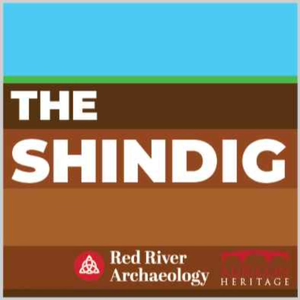
The heritage of a city with Jens Thoms Ivarsson
The Shindig - An Archaeology Podcast
11/17/21 • 39 min
Jens Thoms Iversson, the creative director of the Rain Gothenburg project in Sweden, talks to us about weather and heritage, developing in historical cities, and how to design creative infrastructure.
You can learn more about the project here: Rain Gothenburg - Göteborg 2021 (goteborg2021.com)
Hosted on Acast. See acast.com/privacy for more information.
Show more best episodes

Show more best episodes
FAQ
How many episodes does The Shindig - An Archaeology Podcast have?
The Shindig - An Archaeology Podcast currently has 40 episodes available.
What topics does The Shindig - An Archaeology Podcast cover?
The podcast is about Society & Culture, History, Archaeology and Podcasts.
What is the most popular episode on The Shindig - An Archaeology Podcast?
The episode title 'The Viking-Age Galloway Hoard - with Dr. Adrián Maldonado' is the most popular.
What is the average episode length on The Shindig - An Archaeology Podcast?
The average episode length on The Shindig - An Archaeology Podcast is 54 minutes.
How often are episodes of The Shindig - An Archaeology Podcast released?
Episodes of The Shindig - An Archaeology Podcast are typically released every 14 days.
When was the first episode of The Shindig - An Archaeology Podcast?
The first episode of The Shindig - An Archaeology Podcast was released on Nov 17, 2021.
Show more FAQ

Show more FAQ